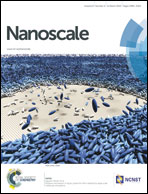Metal-seeded growth of III–V semiconductor nanowires: towards gold-free synthesis
Abstract
Semiconductor nanowires composed of III–V materials have enormous potential to add new functionality to electronics and optical applications. However, integration of these promising structures into applications is severely limited by the current near-universal reliance on gold nanoparticles as seeds for nanowire fabrication. Although highly controlled fabrication is achieved, this metal is entirely incompatible with the Si-based electronics industry. In this Feature we review the progress towards developing gold-free bottom-up synthesis techniques for III–V semiconductor nanowires. Three main categories of nanowire synthesis are discussed: selective-area epitaxy, self-seeding and foreign metal seeding, with main focus on the metal-seeded techniques. For comparison, we also review the development of foreign metal seeded synthesis of silicon and germanium nanowires. Finally, directions for future development and anticipated important trends are discussed. We anticipate significant development in the use of foreign metal seeding in particular. In addition, we speculate that multiple different techniques must be developed in order to replace gold and to provide a variety of nanowire structures and properties suited to a diverse range of applications.


 Please wait while we load your content...
Please wait while we load your content...